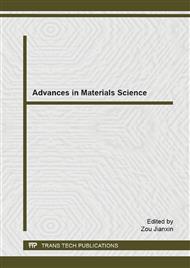p.774
p.779
p.783
p.788
p.792
p.797
p.802
p.807
p.814
Energy Saving for Distillation Process of Mixture with Wide-Boiling Range via T-Q Graph
Abstract:
The temperature-heat duty (T-Q) graph method is provided to save energy for the distillation process of the mixtures with wide-boiling range. It is a visual method to find the heat sources and heat sinks, to use different utilities reasonably, and to realize the energy recovery, such as the steam generation or the heat integration. Through adjusting the operating pressures of some different column sections, the heat integration can be realized, and the multi-effect distillation flowsheet can be obtained. One case is studied and the result showed that the given method is easy and convenient for the engineers to design or to retrofit the distillation process in the interest of energy saving.
Info:
Periodical:
Pages:
792-796
Citation:
Online since:
February 2015
Authors:
Keywords:
Price:
Сopyright:
© 2015 Trans Tech Publications Ltd. All Rights Reserved
Share:
Citation:


